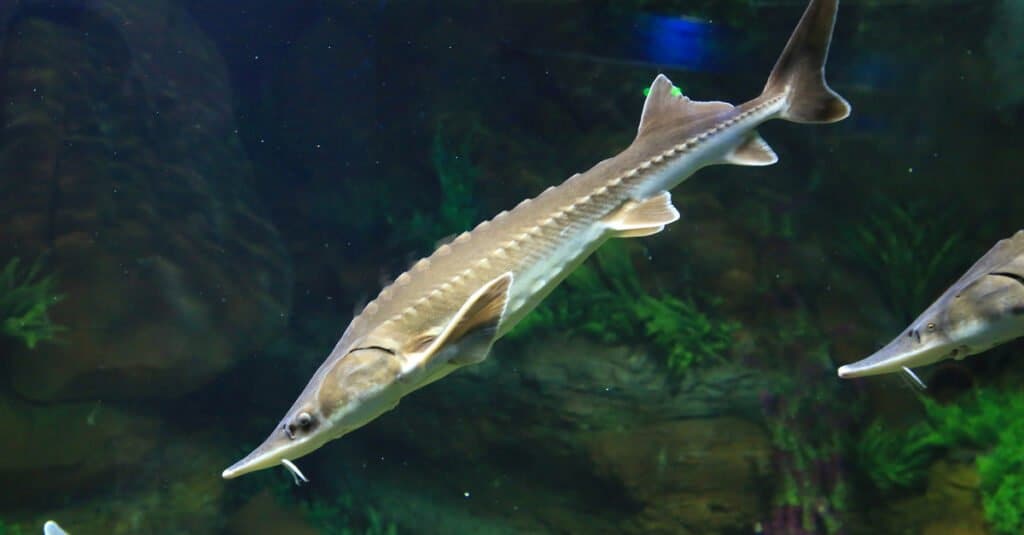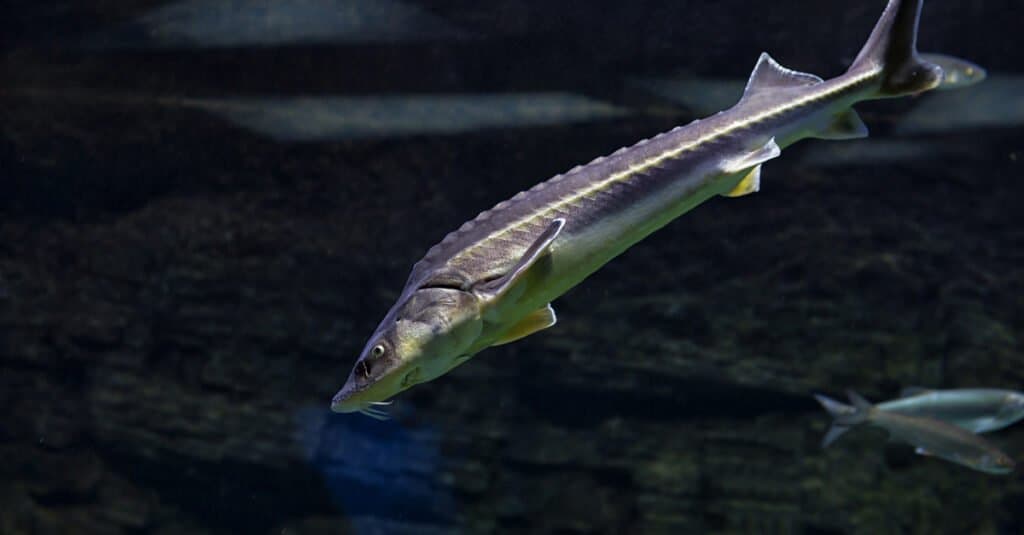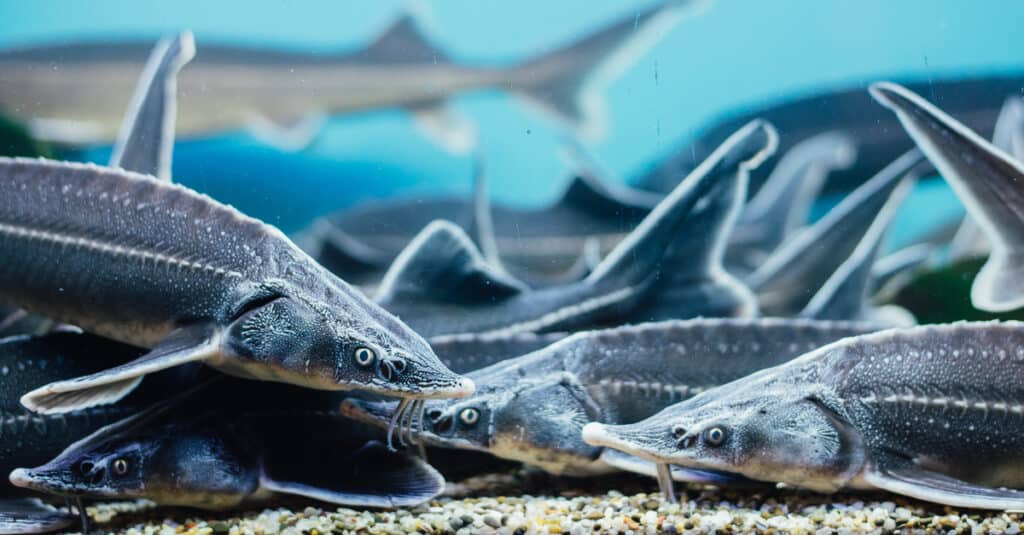There are different types of fish in the Great Lakes – so many that exploring all of them would be nearly difficult. However, some species of fish in these vast waters are notably more significant than others. Not for any other reason but because they are some of the biggest Great Lakes fishes humans have possibly encountered. One of such is the Lake Trout which typically weighs about 40 pounds, and some individuals of this species weigh almost 100 pounds. Muskies, otherwise called Muskellunge, are one of the biggest species in the Great Lakes, also weighing between 5 to 36 pounds, and some specimens have been recorded to grow up to 100 pounds or more! The list of the biggest fish in the Great Lakes goes on and on. But none measures up to the remarkably giant Lake Sturgeon. Sturgeons can grow to a relatively large size, exceeding 7.25 ft long and weighing over 240 pounds! They are unquestionably the largest fish species in the Great Lakes of North America.
So join us as we discover facts about the largest fish recorded in the Great Lakes and where they are most commonly found. We’ll also explore what they eat to grow so big and how long they live. Finally, we’ll take at the factors that threaten their existence in our world today!
What is the Largest Great Lakes Fish on Record?

The largest lake sturgeon on record weighed 300 lbs and was 8 feet long.
©Geermy/Shutterstock.com
Lake sturgeons are the largest fish in the Great Lakes. The largest lake sturgeon on record weighed 300 lbs and was 8 feet long! This massive sturgeon was caught in Lake Michigan. Generally, Lake sturgeons (Acipenser fulvescens) are known to grow incredibly huge. An average specimen weighs about 200 pounds and can grow up to 6 ft long. A 216-pound Lake sturgeon was caught in Lake Erie in 1929. Another female sturgeon caught in Wisconsin in 2012 was reported to have weighed 240 pounds and measured about 7 feet 3 inches long.
The lake sturgeon cannot be mistaken for any other species of fish in the Great lakes. Unlike most fish, it has no scales. Instead, it has tough skin and rows of bony plates running along each side of its body – making it look like an armored torpedo. It also has a large dark or greenish-grey body, a lighter belly, and elongated, spade-like snouts with two pairs of barbels that dangle near their mouths. These barrels are whisker-like organs that help the fish locate bottom-dwelling prey. In addition to this, the lake sturgeon has a shark-like tail and it is also partly cartilaginous, which means its skeleton is composed mainly of cartilage instead of bone, similar to sharks and rays.
Sturgeons have a spectacular habit of jumping out of the water until they appear to be standing on their tails, then landing with a loud splash – a performance known as “porpoising.” The reason for this behavior remains unknown but most witnesses describe it as an incredible sight to behold.
What Lakes are Lake Sturgeon Most Common in?

The Great Lakes ecosystems host one of the largest populations of lake sturgeons in the world.
©Galina Savina/Shutterstock.com
Lake Sturgeon is the largest species of temperate freshwater fish native to European, Asian, and North American waters. It is the only one of the 25 species of sturgeon endemic to the Great Lakes basin. Contrary to what its name may suggest, a lake sturgeon can be found in both rivers and lakes. It is majorly found in the Mississippi River, Lake Michigan, and Lake Superior drainage basins. Its range extends from Hudson Bay in the east to the Mississippi River in the west of North America.
The Great Lakes ecosystems –including the five large Lakes Superior, Michigan, Huron, Erie, and Ontario— are home to one of the largest populations of lake sturgeons in the world and it is estimated that there are yet about 30,000 lake surgeons in this region.
However, overfishing has drastically reduced the sturgeon population in the Great Lakes today.
What Do Lake Sturgeon Eat?
Lake sturgeons are bottom feeders, using their whisker-like barrels to seek out prey to eat from the bottom of the water bodies. They suck prey into their protruding, retractable mouth by extending their lips to vacuum up the soft live food, which they swallow whole due to their lack of teeth. Surprisingly, the food a lake sturgeon eats is small compared to its body size. They’re slow-moving fish and slow-feeders who can survive several weeks without eating. A lake sturgeon’s diet primarily consists of insect larvae and small invertebrates, including snails, clams, crayfish, and leeches it finds in the mud. You’ll find sturgeon at the bottom of lakes with extensive areas of shallow waters where prey is abundant. Lake sturgeons only migrate up during the spawning season.
How Long Do Lake Sturgeone Live?

Female lake sturgeon can live up to 150 years.
©Stenko Vlad/Shutterstock.com
Lake sturgeon is the oldest fish in North America’s Great Lakes. Fossil records show that it has ancestral ties to related species dating back 200 million years. There is evidence to support that lake sturgeons have been swimming around the earth for more than 135 million years —which means they probably hung around with dinosaurs! Not only are they one of the oldest species of fish in existence, but they also live extremely long lives. The typical lifespan of the male lake sturgeon is 55 years, while females can live longer for up to 150 years! The oldest recorded lake sturgeon was caught in Lake Huron and aged 155 years old.
Are Lake Sturgeon Under any Threat Today?
Lake sturgeons were once killed en masse as a nuisance because they damaged fishing gear. When their meat and eggs became valued, commercial fishermen also began to target them. They have also been slaughtered because they’re considered valuable gourmet food fish, as well as a source of caviar and isinglass. Records show that commercial fishermen pulled an average of 4 million pounds of sturgeon from the Great Lakes each year between 1879 and 1900. The effects of this are still seen today. These human activities coupled with environmental challenges such as pollution and the construction of dams have made the lake sturgeon a vulnerable species. Currently, 19 of the 20 states within the fish’s original U.S. range list it as either threatened or endangered. Throughout the world, the only significant populations of lake sturgeons in existence are found in Wisconsin and Michigan. In an attempt to restore the species of lake sturgeon, Michigan has prohibited commercial fishing for lake sturgeon and strict regulation of sports sturgeon fishing. Each year, thousands of sturgeon are released into the Great Lakes during public ceremonies and gatherings.
The photo featured at the top of this post is © Fabien Monteil/Shutterstock.com
Thank you for reading! Have some feedback for us? Contact the AZ Animals editorial team.







